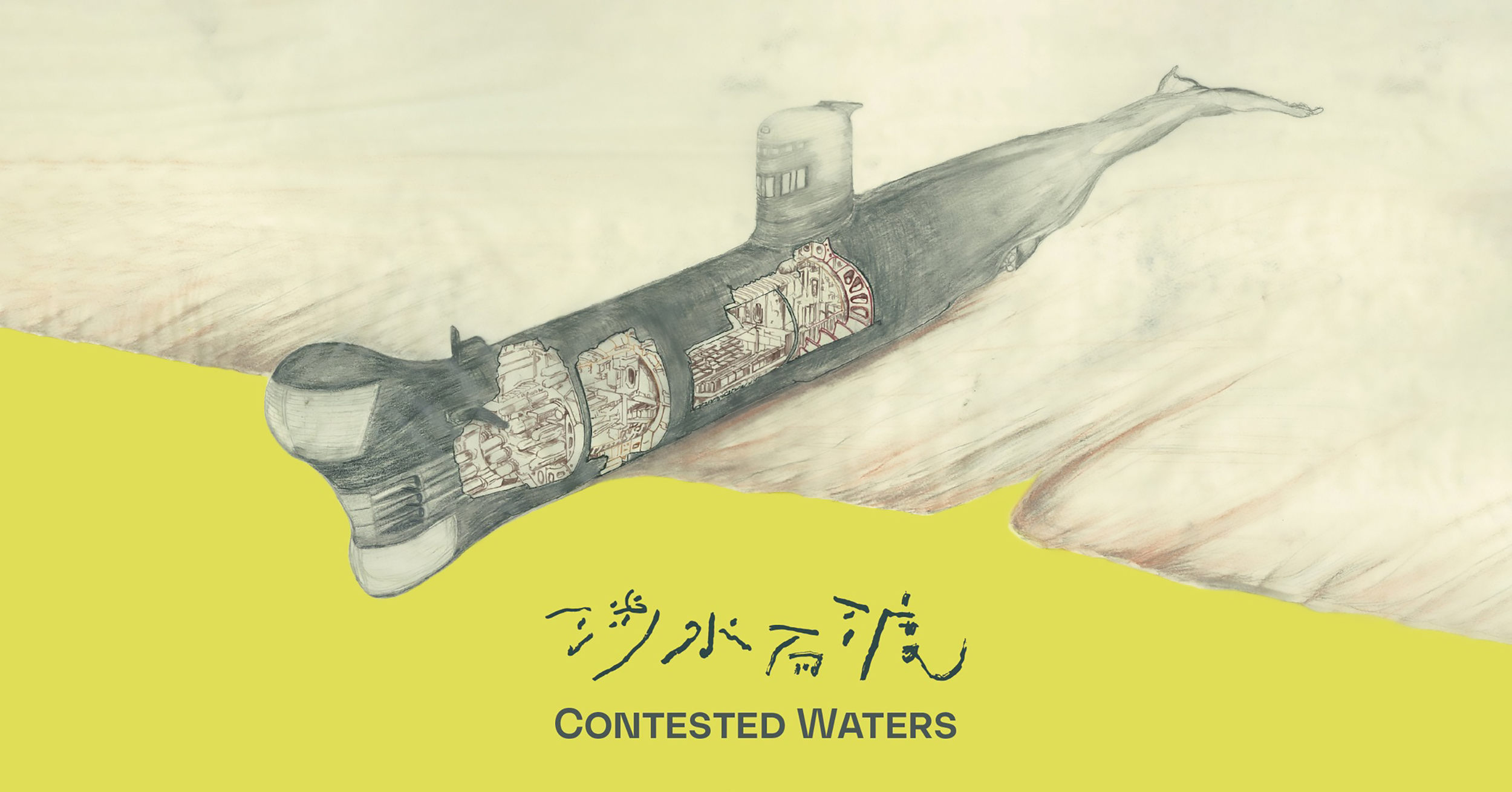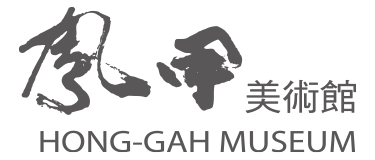BACK
CONTESTED WATERS

From the River to the Sea
Text / I-Yi Hsieh (curator)
James Scott, the renown political theorist who passed away in 2024, spent his life addressing the world that cannot be governed, the people that cannot be controlled, and the rivers that cannot be domesticated. In the preface to his posthumously published book, In Praise of Floods: The Untamed River and the Life It Brings, Scott writes his experience of falling into a stream and was nearly swept away. He also wrote that at one occasion he was set to sit next to some hydraulic engineers, to whom he lamented about a river that never got to the sea. The hydraulic engineer countered Scott’s sentiment by saying that every drop of water should be used, and any river water flowing into the sea is a waste. Scott found himself having little to talk to this hydraulic engineer.
When I was about 10 years old, I also rode my bike straight into the stream in front of my grandmother’s house. Covered with injuries and mud, I crawled out of the river. Another time I got lost by the river was at the Guandu Temple by the Tamsui River, the major river in the Taipei Basin. I was separated from my parents, and an unknown force pulled this young child away from the crowd, towards the wide pass of the Tamsui River. Is it the cry of Yu Yonghe three hundred years ago that called me? In 1697, Yu, then the Qing officer sent to explore sulfur mines in Beitou, wrote that his “sea ship enters from the Tamsui port, looking at the place between the two mountains called the Gandamen; the waterway is very narrow, the entrance is wide, the water runs fast, and the river turns into a big lake with no end.” Was I pulled by the ghost of Yu toward this Taipei Lake that made the Taipei basin as we know today?
Streams and rivers are composed more than just water. The watersheds created by seasonal flooding are not just a subject of control for zealous hydraulic infrastructures – floods bring necessary ecological changes. Flooded rivers, untamed rivers, lagoons and watersheds formed dynamic hydrology and shallow mountains where dynamics of life take place.
Anthropologist Elizabeth Povinelli writes in her ethnography that the stream for Australia Aboriginals is a river, a myth, and a young girl as well; to them a changing and living being. Even in the 2010 management report of the Keelung River, commissioned by the Water Resources Administration of Taiwan’s Ministry of Economic Affairs, several phrases such as “suddenly” and “freedom” appear to describe the notoriously meandering river in the basin:
The Keelung River starts about 13 kilometers from Jingtong in Pingxi District in the upper reaches, flows northeast to east, flows through Jingtong Keng, Pingxi, Shifenliao, Dahua to the vicinity of Sanering, suddenly turns north and north-north-east flows through Hou Tong and Ruifang, flows about 5 kilometers, and suddenly turns into a southwest-west flow path to the east of Ruifang District, meanders about 14 kilometers in the wide riverbed, passes through Sijiaoting, Nuan Nuan to Badu, and then turns to the southwest, showing a significant meandering, entering the Taipei Basin from the vicinity of Xizhi. After entering the Taipei Basin, it shows a significant style of freedom to meander, and finally joins the Tamsui River at Guandu Pass.
Not being governed is the basic form of life. Uncontrolled flooding is the result of the planetary ecological changes, the dynamic interaction between rivers and seasons. That is also why the philosopher of science and technology Isabelle Stengers notes that our ecological relationship with the earth is closer to magic, a kind of wishful thinking, rather than something reducible to absolute control of human rationality.
The Taiwanese, Finish, and Indian artists in this exhibition lead us toward thinking about this magic. Contested Waters echoes the thesis that Paul Gilroy, in the Black Atlantic, puts forward: it is about time we shift the metaphor and narratives of the world from cars and buses on land, to boats, ships, and rafts— floating life containers and deep dive utensils at sea, including the first generation of submarines in the 1950s shaped as a whale however is now stuck on land, broken. What Gilroy draws attention to is that the modernity we know it today is constructed by the slaves shipped across the Atlantics, from Africa into Europe and the Americas. They remind us the liquid routes and wet aesthetics embedded in us despite the levees, dams, digital hydro-engineering facilities reducing aquatic lives into either capitalized and militarized zones or dried quantities to be easily extracted, blocked, and thus denied agency.
From the river to the sea, shall we give the magic a try again?
Artists
Ilmari Koria
Tzu-An Wu
Jui-Lan Yao
Yu-Ping Kuo
Chen Chen Yu
Ranjit Kandalgaonkar
Chaong-Wen Ting
Szu-Ni Wen
Exhibition Events
Artist Workshop | Esther Lin: BEITOU PAK-HÁI
Date | 2025.05.17 (Sat.) 11:00 – 14:00
Location | Beituo Market、Hong-Gah Museum
Date | 2025.05.17 (Sat.) 11:00 – 14:00
Location | Beituo Market、Hong-Gah Museum
Expert Talk | How do we discuss wetlands?
Date | 2025 06.07 (Sat.) 16:00 – 17:30
Location | Hong-Gah Museum
Date | 2025 06.07 (Sat.) 16:00 – 17:30
Location | Hong-Gah Museum
Performance | Sound Performance by SEC_
Date | 2025 06.14 (Sat.) 17:30 – 19:00
Location | Hong-Gah Museum
Date | 2025 06.14 (Sat.) 17:30 – 19:00
Location | Hong-Gah Museum
Organized with International Center for Cultural Studies
Curatorial Lecture | Online reading group on James C. Scott’s final work, In Praise of Floods , along with a curatorial experience sharing
Speaker | Yu-Ting Hsieh
Date | 2025 05.14 (Wed.) 16:00 – 18:00
Location | Online + Shoushan Visitor Center, Kaohsiung
Speaker | Yu-Ting Hsieh
Date | 2025 05.14 (Wed.) 16:00 – 18:00
Location | Online + Shoushan Visitor Center, Kaohsiung
Artist Talk | Ranjit Kandalgaonkar: [shipbreak_dossier]
Date | 2025 05.18 (Sun.) 14:00
Location | Hong-Gah Museum
Date | 2025 05.18 (Sun.) 14:00
Location | Hong-Gah Museum
Thematic lecture series | AI and Voice in machine
Speaker | Domenico Napolitano (Tenure Track Researcher, Law and Organizational Studies for the Promotion of Diversity)
Date | 2025 06.11 (Wed.) 13:30 – 16:30
Location | Online + Hong-Gah Museum
Speaker | Domenico Napolitano (Tenure Track Researcher, Law and Organizational Studies for the Promotion of Diversity)
Date | 2025 06.11 (Wed.) 13:30 – 16:30
Location | Online + Hong-Gah Museum
Thematic lecture series | Accessibility in Disability Art
Speaker | Domenico Napolitano (Tenure Track Researcher, Law and Organizational Studies for the Promotion of Diversity)
Date | 2025 06.13 (Fri.) 13:30 – 16:30
Location | Online + Hong-Gah Museum
Speaker | Domenico Napolitano (Tenure Track Researcher, Law and Organizational Studies for the Promotion of Diversity)
Date | 2025 06.13 (Fri.) 13:30 – 16:30
Location | Online + Hong-Gah Museum
Organizer | Chew’s Culture Foundation Hong-Gah Museum
Sponsor | National Culture and Arts Foundation, RSI Group, Lion Pencil CO, MOE’s Higher Education SPROUT Project, National Nature Park Headquarters, National Park Service, Ministry of Interior, C-LAB CREATORS, Department of Humanities and Social Sciences and the Multispecies Justice research cluster at International Center for Cultural Studies in National Yang-Ming Chiao-Tung University, The New Institute for Environmental Humanities at Ca’ Foscari University of Venice
Sponsor | National Culture and Arts Foundation, RSI Group, Lion Pencil CO, MOE’s Higher Education SPROUT Project, National Nature Park Headquarters, National Park Service, Ministry of Interior, C-LAB CREATORS, Department of Humanities and Social Sciences and the Multispecies Justice research cluster at International Center for Cultural Studies in National Yang-Ming Chiao-Tung University, The New Institute for Environmental Humanities at Ca’ Foscari University of Venice
Taipei
Opening | 2025.05.02(Fri.) 19:00
Opening Performance | Li Tzi-Mei
Venues | Hong-Gah Museum
Dates | 2025.04.26 – 06.22
Kaohsiung
Opening | 2025.04.16(Wed.) 16:00
Opening Performance | Rübezahl
Venues | Shoushan National Nature Park Visitor Center
Dates | 2025.04.15 – 06.15
Venice
Venues | S.a.L.E. Docks
Dates | Venice 2025.09.18 – 11.18







